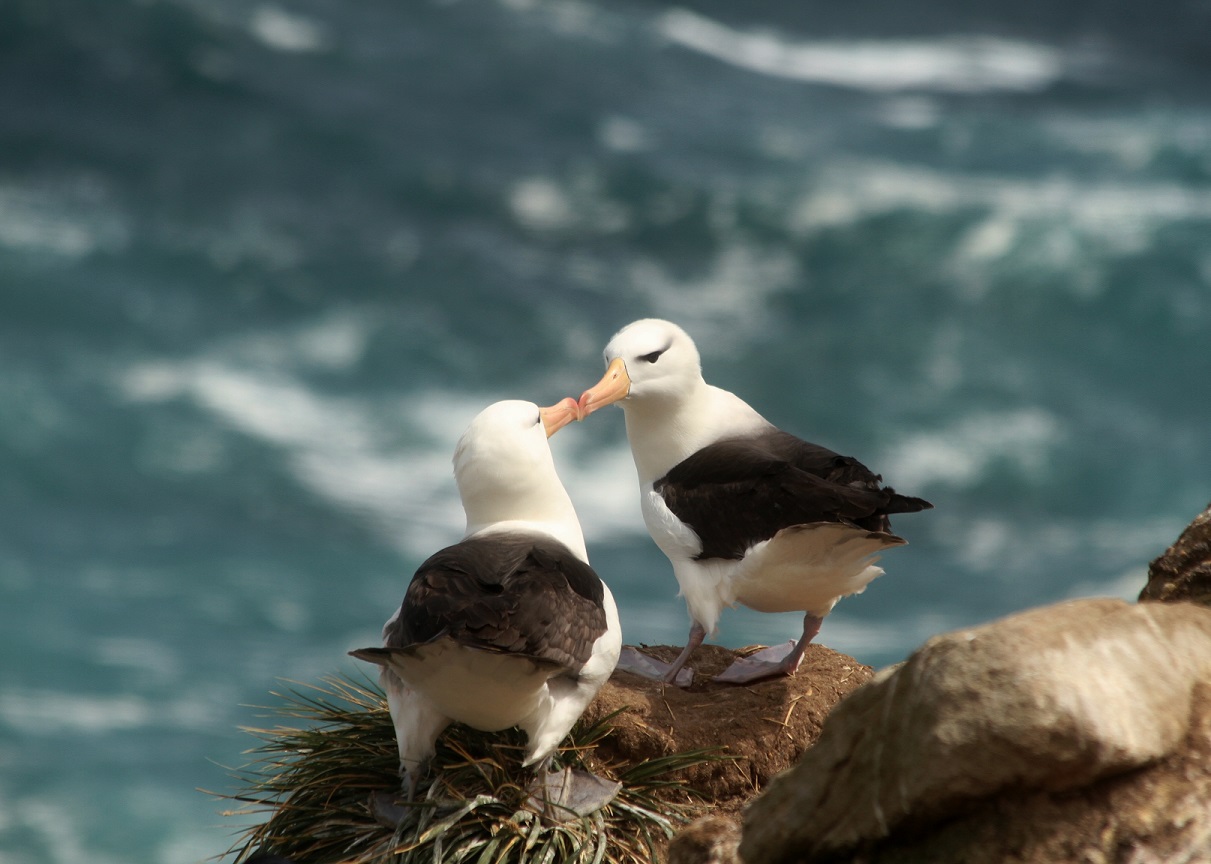Black-browed Albatrosses, photograph by Letizia Campioni
Natasha Gillies (Department of Zoology, University of Oxford, UK) and colleagues have published open access in the ornithological journal Ibis on allopreening by Black‐browed Albatrosses Thalassarche melanophris.
The paper’s abstract follows:
“The functions of display between breeding pairs of animals have been given little attention outside of sexual selection. Yet evidence suggests that display between partners is in fact most commonly observed following mate choice, and is often just as elaborate. In many bird species, allopreening, when one member of a pair preens the other, is a major component of display both pre‐ and post‐pair formation. Despite this, there has been little investigation into its functions. Explanations that have been put forward tend to focus on its role in feather hygiene, which has limited phylogenetic support, or its function in the maintenance of the pair bond, though how this might occur or indeed what this actually represents has not been adequately explained. Phylogenetic evidence reveals that allopreening is most commonly observed in those species exhibiting high levels of partner retention and biparental care, and it appears to be functional in maintaining cooperation in parental behaviour in at least one species. In our observational study, we explored the patterns and putative functions of allopreening during the nest‐relief displays of breeding pairs of Black‐browed Albatrosses Thalassarche melanophris during incubation and chick‐provisioning. Allopreening was an important feature of displays, constituting 30% of display time. We found that the bird returning from its foraging trip usually initiated allopreening, and preened more than its partner prior to change‐over of nesting duties. We further found a positive relationship between the amount of time the pair spent in display and the duration of the subsequent foraging trip, providing tentative support for a function in maintaining cooperative parental behaviour between the parents. Although we cannot be conclusive as to its exact functions, we add to a limited literature the first exploration of functions for this conspicuous behaviour in albatrosses.”
With thanks to Barry Baker.
Reference:
Gillies, N., Guilford, T. & Catry, P. 2021. Allopreening in the Black‐browed Albatross (Thalassarche melanophris): an exploration of patterns and possible functions. Ibis doi.org/10.1111/ibi.12960.
John Cooper, ACAP Information Officer, 16 May 2021

 English
English  Français
Français  Español
Español 